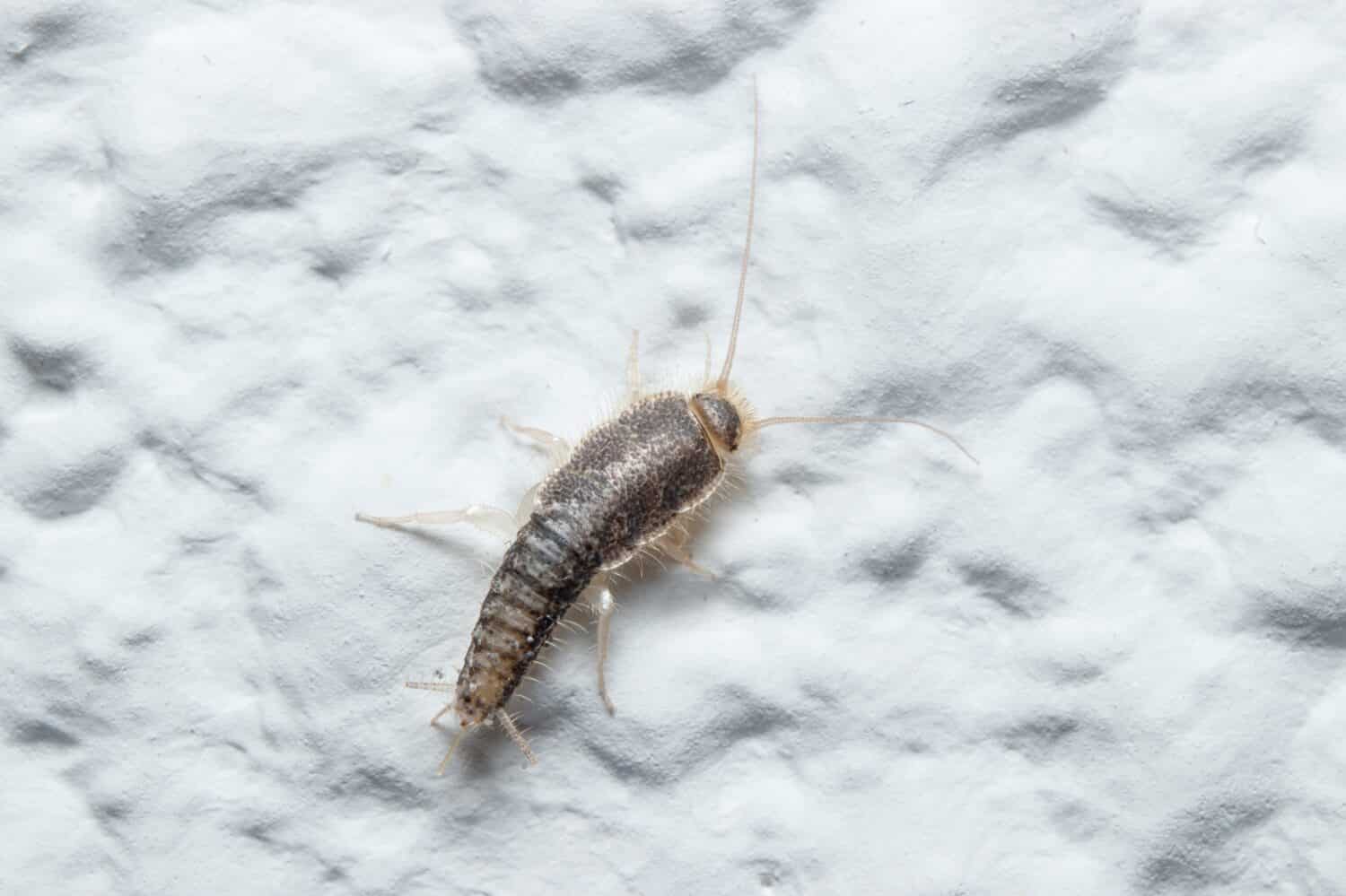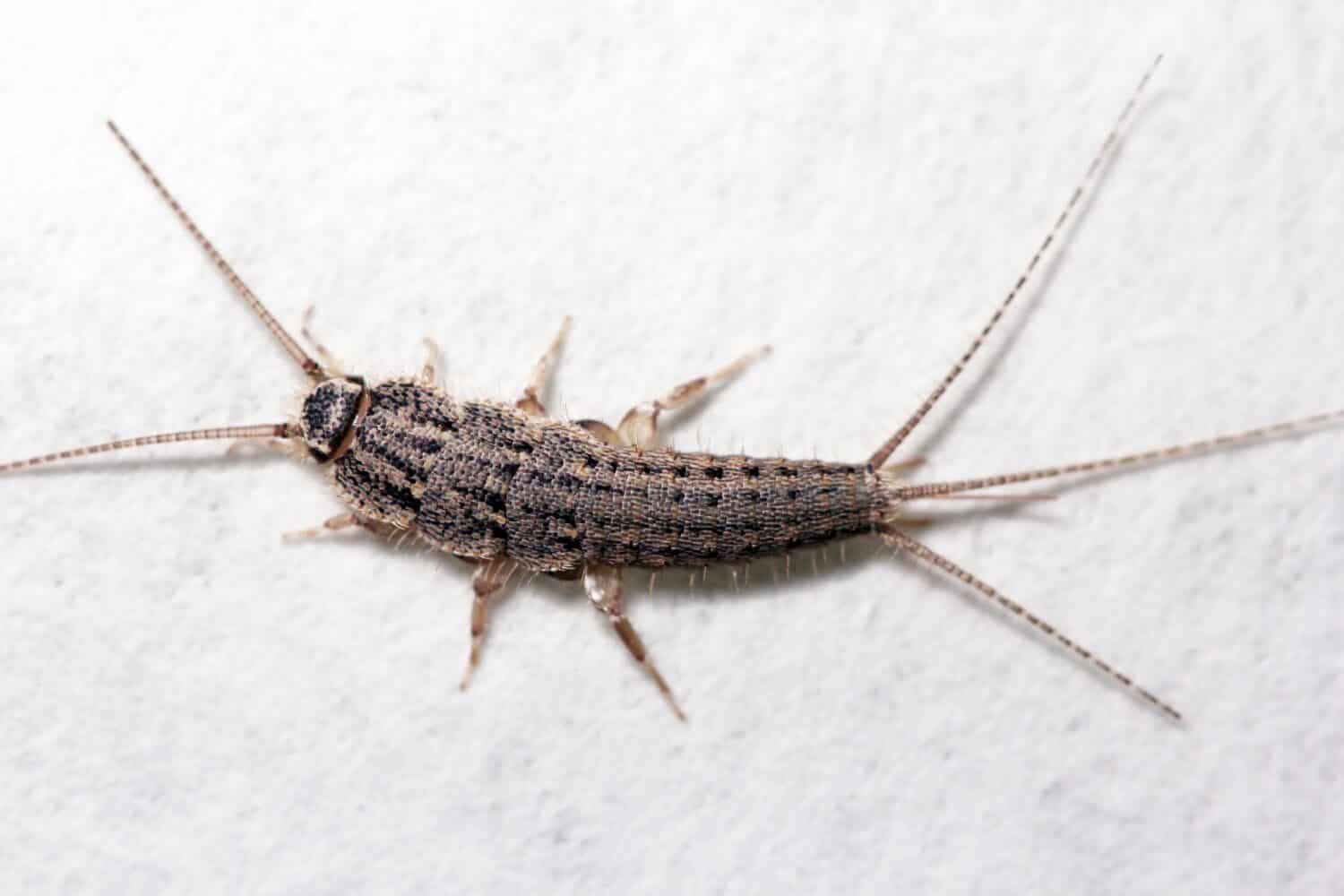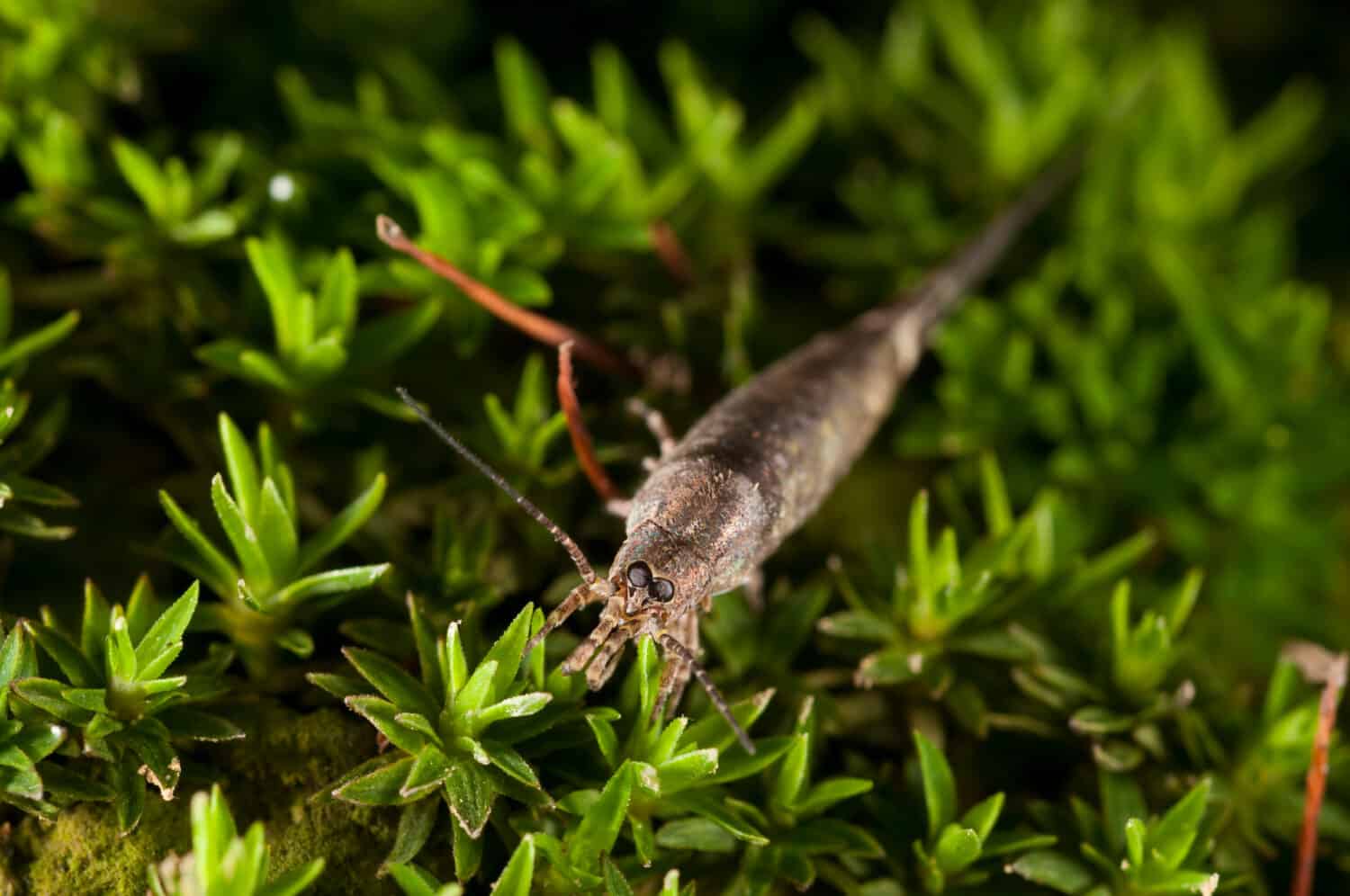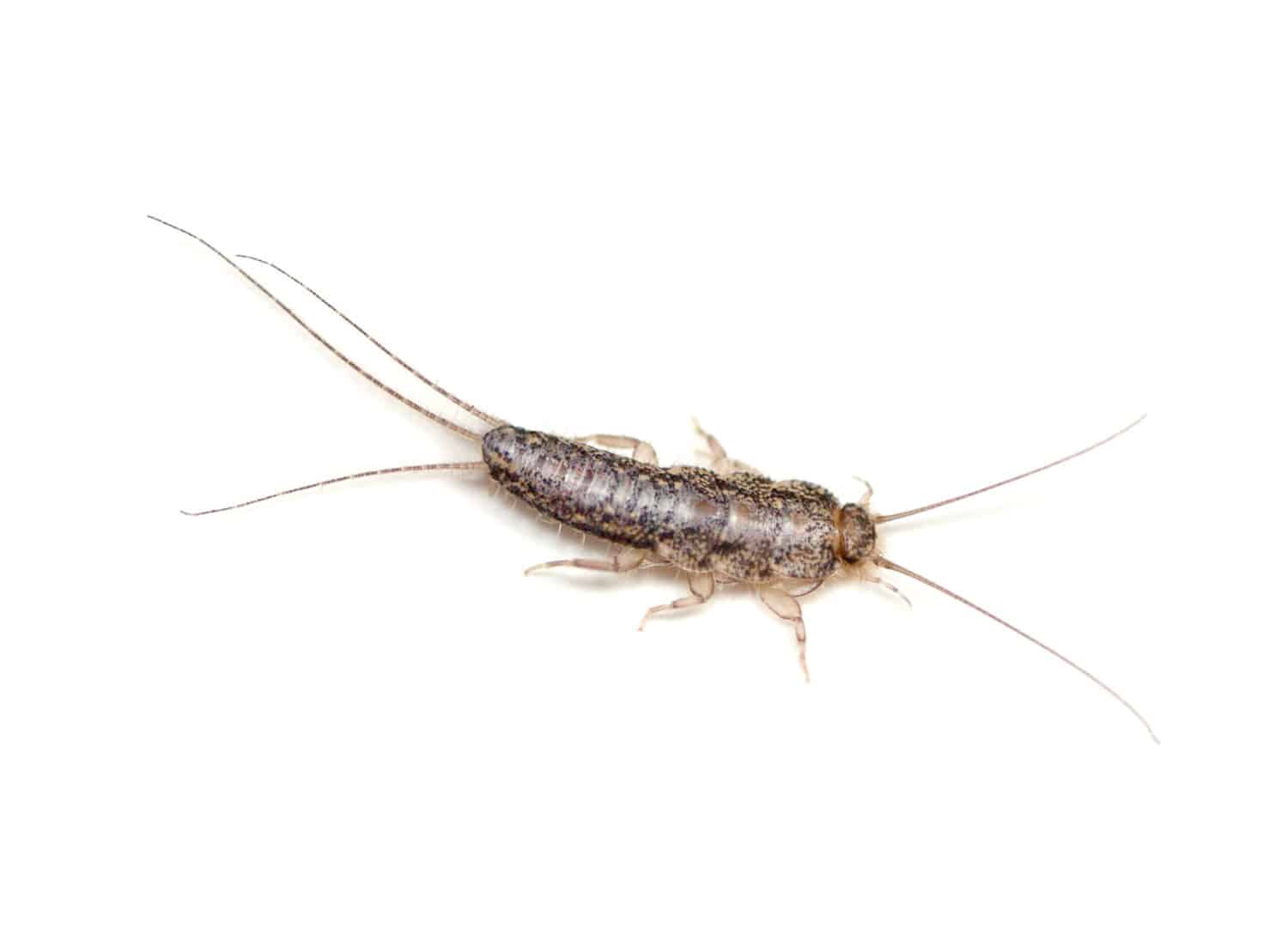Before we talk about silverfish and their creepy appearance, it may help to put them into better context first. As part of the web of life, they are simply one of countless strange beings with whom we share our planet. Nature is spectacularly diverse, after all. From bacteria, plants, animals, and fungi, the world is full of odd and fascinating creatures. Scientists estimate that there are around 8.7 million different known species of plants and animals, including humans, on the planet. Nearly 6.5 million species live on land, while 2.2 million inhabit our oceans. From the enormous and majestic to the minuscule and enchanting, we are surrounded by beings that delight, intrigue, inspire and perplex us. Many of these look otherworldly to the human eye, especially insects.
As the most varied group of organisms, insects greatly outnumber all other species – with nearly 1.4 billion insects for every human being on earth! Put another way, there are approximately 10 quintillions (10,000,000,000,000,000,000) of insects flying, swarming, buzzing, and crawling around right now – a number far bigger than the human mind can even comprehend. Capable of thriving in terrestrial and freshwater habitats, and even able to live in the air and in marine environments, they are incredibly prolific and tenacious. With their vast array of shapes, sizes, colors, and adaptations, insects make up nearly 90 percent of all animal life. And yes…because they breathe oxygen, move, sexually reproduce, and consume organic material, they are technically considered animals. I know – that is crazy, right?
Silverfish Are Creepy But Maybe Not That Creepy
There is no getting around the fact that many insects are a tad eerie and disturbing. Even if we understand and appreciate their importance, their multiple legs, unusual body shapes, or peculiar, unpredictable movements – including scuttling or flying erratically – can all trigger a sense of unease or discomfort. With nocturnal tendencies and jarring movements, silverfish often startle people who are not expecting them. Thus, their secretive nature and tendency to hide in dark areas can be unsettling.
In reality, silverfish do not even make it to the list of the top ten creepiest insects. Nor are they the weirdest things humans have ever seen. Way creepier creatures exist, of course, Just think of the monsters hiding in the deep, deep sea, for instance.

Goblin sharks live in the deep sea at depths ranging from 650 to 4,260 feet. Their long, flattened snout, protruding jaws, and sharp, needle-like teeth give them a distinct if terrifying appearance.
One key difference, however, is that the goblin shark (Mitsukurina owstoni) and giant isopods (Bathynomus giganteus) are far out of reach and impossible to encounter without highly specialized training and equipment. No one is going to accidentally run into deep sea blob sculpin (Psychrolutes phrictus) either, thank goodness. This is not true for silverfish who roam on land and invade our personal space. But even though we can and do see them often, they still don’t make the cut for being the most surreal or bizarre animals out there. So while they are weird, they aren’t extra, extra weird.
More importantly, silverfish and their close relatives, such as firebrats, are mostly harmless to humans. They don’t bite, sting, or carry disease. Nor do they make venom or suck our blood. Silverfish are not parasites, do not ruin crops, and will not make us sick. So overall, they are really just a nuisance and nothing more.
Interesting Things to Know About Silverfish
Silverfish, scientifically known as Lepisma saccharina, are small, wingless insects belonging to the order Zygentoma. Ancient and resilient, they predate the cockroach. In fact, silverfish are some of the oldest insect species still in existence today. Scientists consider Zygentoma insects living fossils, as their overall body plan and behavior have remained relatively unchanged over vast periods of time. They first appeared on Earth around 400 million years ago during the Paleozoic Era. This means that silverfish existed nearly 100 million years before the emergence of dinosaurs!
Named after their silvery-gray appearance and darting, fish-like movements, these peculiar bugs are usually about half an inch to one inch in length. They are also fast, and are characterized by a tapered, carrot-shaped body. Their silver-gray exoskeleton is covered in tiny scales, giving them a metallic appearance.
Sporting long antennae and three tail-like appendages, they do have a pretty serious ick factor. Not only are they aesthetically unpleasing, but worse, they are all around us. They enjoy camping out rent-free in libraries, bookstores, museums, offices, and yes…even in our homes. Nocturnal and adept at hiding in cracks, crevices, and other tight spaces, they are attracted to damp and dark environments, and commonly lurk in basements, attics, bathrooms, kitchens, and other areas with high humidity. In short, these creeptastic bugs are everywhere we are. Yikes.
Bizarre Eating Habits and Long Lives
On top of their unsightly appearance and status as unwelcome house and reading room guests, they have pretty bizarre eating habits, too. As scavengers, silverfish feed on a variety of starchy materials-devouring paper, human and pet food, fabric, photographs, book bindings, wallpaper, and even shampoo, dandruff, hair, and glue! EWW! Silverfish are detritivores, meaning they feed on dead or decaying plant and animal material, as well as other organic debris. They are important to the ecosystem in that capacity. They are also a vital food source for spiders, centipedes, ground beetles, and other insects.
Their diet alone is pretty gross, even if it is not that much different from many other insects out there. But what is even more surprising is how long they can survive without eating anything at all. They can live a really, really long time – up to a year – without ever taking a single bite. In their ability to weather starvation, they beat cockroaches by an impressive 11 months! That alone lends them extra creepiness, if you ask me.
Their food preferences and ability to fast aside, silverfish and their relatives can live for an extremely long time. Whereas most insects live less than a year, these hearty ones can live up to three years in favorable conditions.
Now, let’s examine the five creepiest silverfish so you can decide if they make your skin crawl or not.
Not every insect below is technically a silverfish. Entomologists have historically used the term Thysanura to refer to a group of wingless insects that included silverfish and other bristletails. However, with advancements in insect classification and newer understandings of their evolutionary relationships, scientists have replaced this order with more refined taxonomic groups, namely Zygentoma and Archaeognatha.
Today, silverfish and related species are typically classified under the orders Zygentoma, while bristletails (including jumping bristletails) are classified under the order Archaeognatha. These two orders are now considered distinct and separate from each other. But because of their visual and behavioral similarities -as well as historical confusion – we are listing all of these insects together here.
Common Silverfish (Lepisma saccharina)

Silverfish are wingless insects with a tapered abdomen and a carrot-shaped body, which gives them a fish-like appearance.
©JorgeOrtiz_1976/Shutterstock.com
Unlike many other insects, silverfish do not have wings at any stage of their life cycle. They are entirely wingless throughout their development, relying solely on their legs for movement. But do not be fooled: despite not being able to fly, they are quite fast. Despite their small size, they run quickly and smoothly across various surfaces, thanks to their long, slender bodies and numerous legs. Silverfish also undergo a process called molting to grow. They shed their exoskeletons multiple times throughout their lives, leaving behind thin, translucent exuviae (cast-off skins).
Firebrat Silverfish (Thermobia domestica)

Firebrats are shorter and stouter than silverfish and can run very fast.
©Tomasz Klejdysz/Shutterstock.com
As their name suggests, firebrats prefer very warm environments and commonly live in areas with high temperatures, like boiling rooms, dryers, water heaters, or behind ovens. In fact, these heat worshipers can happily survive in temperatures exceeding 100 °F (37.8 °C)! Firebrats are typically light brown to tan in color and have a mottled or speckled pattern, which acts as a clever camouflage strategy that helps them blend into their surroundings. Similarly, they exhibit negative phototaxis, meaning light generally repels them so they remain more active in dark environments. This behavioral trait further protects firebrats from danger, as they naturally seek out dimly lit or dark areas, minimizing the chances of being detected by predators. When threatened, firebrats move very quickly in a jerky and erratic manner, making it difficult for other insects to catch them.
Jumping Bristletail (Archaeognatha)

Jumping bristletails have big eyes that touch each other and are some of the oldest insects on earth.
©Federico.Crovetto/Shutterstock.com
As their name suggests, jumping bristletails or springtails can spring forward or jump using a specialized appendage found on the underside of the abdomen, a unique feature that sets them apart from other insects. The name “furcula” is derived from the Latin word for “forked,” which describes the shape of this structure. Bristle tails have a distinctive mating behavior called “dancing” or “swarming.” During mating season, large numbers of males and females gather together to engage in complex movements and antennal interactions which facilitates mating and ensures genetic diversity within the population.
Gray Silverfish (Ctenolepisma longicaudata)

One of the distinct features of
Ctenolepisma longicaudatais its long, thread-like tail. It tail can be several times the length of its body, giving this silverfish a unique and noticeable appearance.
©eleonimages/Shutterstock.com
Because they originate from tropical and subtropical habitats, gray silverfish need high humidity, which helps prevent the desiccation (drying out) of their bodies. A relatively primitive respiratory system renders these insects sensitive to dry conditions. Adequate moisture in the environment helps them maintain their physiological functions and prevents dehydration. For these reasons, they are more prevalent in outdoor environments than their relatives, but still come inside to annoy us from time to time.
Four-lined (Ctenolepisma lineatum)

Characterized by four dark, longitudinal stripes running along its body, it is easy to see where the common name, “four-lined silverfish”, comes from.
©Melinda Fawver/Shutterstock.com
Four-lined silverfish are slightly rarer than common silverfish with a more limited distribution. They are primarily found in regions of North America, including parts of the United States and Canada. Common silverfish, on the other hand, have a worldwide distribution and exist in various regions across Europe, Asia, the Americas, and other parts of the world. They reproduce through laying eggs. Female silverfish lay eggs in hidden areas, and the eggs hatch into nymphs, which undergo several molting stages before reaching adulthood.
Here’s a handy table for identifying silverfish and their close relatives.
| Type of Silverfish | Special Characteristics or Features |
|---|---|
| Common Silverfish (Lepisma saccharina) | Silverfish are white when they first hatch, and only gain a silver color as they mature. |
| Firebrat Silverfish (Thermobia domestica) | Prefer warm places, and can be found in boiler rooms, dryers, water heaters, or behind ovens. |
| Jumping Bristletail (Archaeognatha) | A special appendage on their abdomen, called the furcula, allows these insects to jump nearly 6 inches. |
| Gray Silverfish (Ctenolepisma longicaudata) | These insects have longer tail filaments than common silverfish, which contributes to its distinct appearance. |
| Four-lined (Ctenolepisma lineatum) | Exist mostly in North America, including parts of the United States and Canada, rather than all over the world. |
The photo featured at the top of this post is © Panto.unno/Shutterstock.com
Thank you for reading! Have some feedback for us? Contact the AZ Animals editorial team.







